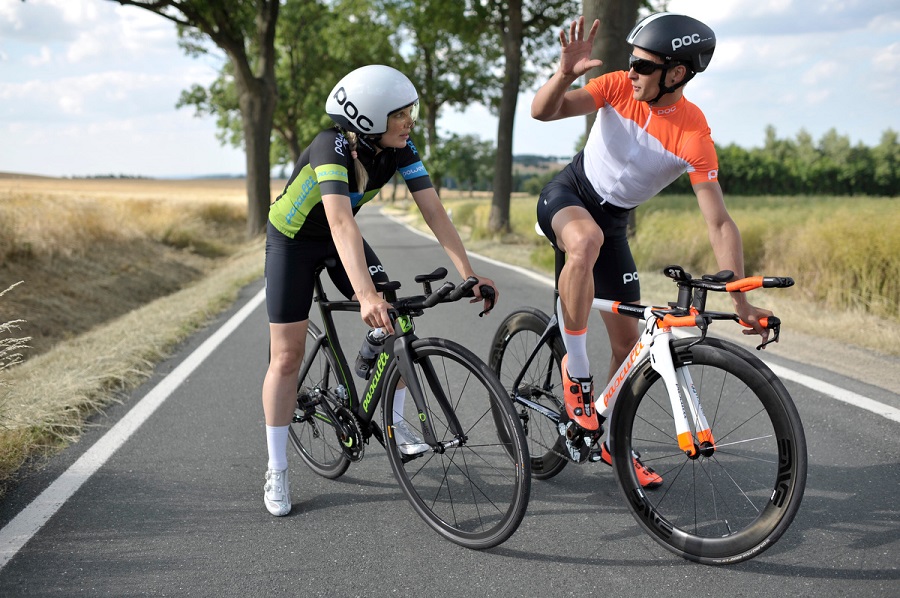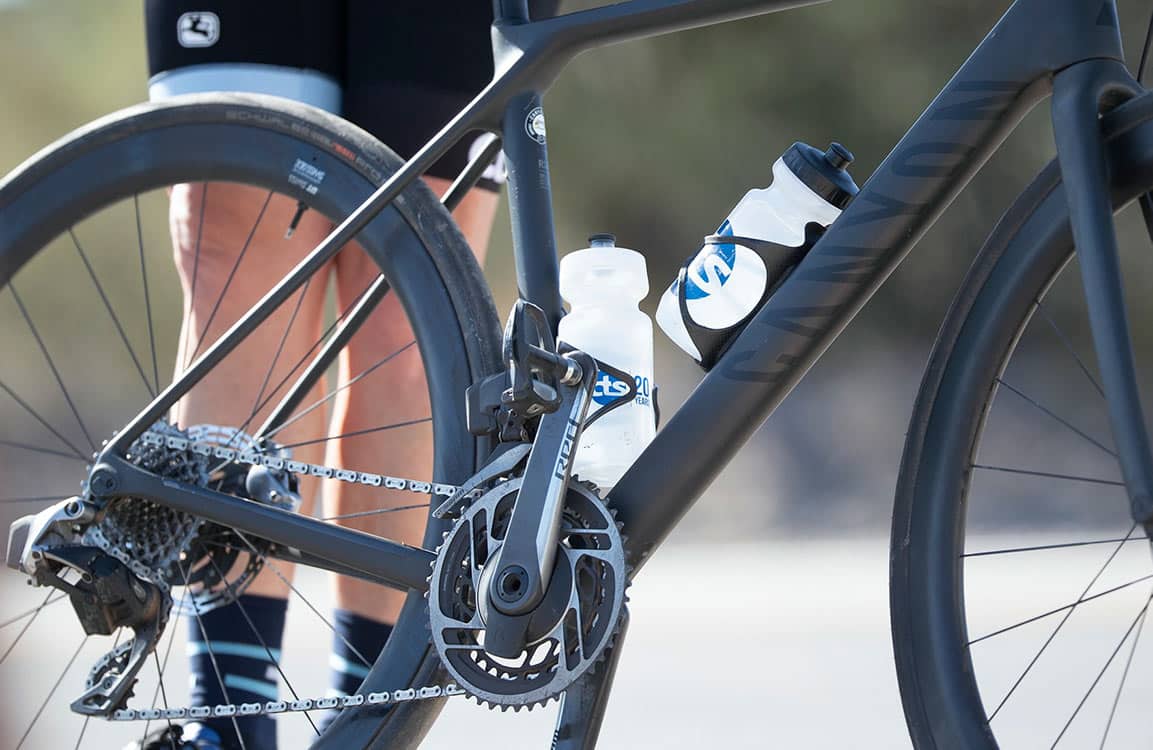Commuting With Data Insight
Once a luxury for cycling performance enhancement, power meters have evolved into a sort of tool cyclists need to achieve that next level of performance and data analysis.
Quick Guide to Power Output Basics for Your Daily Ride
A powermeter captures the wattage a cyclist is generating for real-time performance data, far more objective than only using HR or speed metricsById — Mike Boles. A power meter equipped cyclist might find that they average a power output of 200 watts on their 10 kilometer ride to work. Currently, power output is monitored throughout a journey and variablity between segments of the commute will allow a cyclist to identify where more effort is needed, or where gains can be made in efficiency.
Route and Effort Optimization in Practice
Imagine a cyclist commuting in hilly areas. They can take into account their power data and make their effort more precise. If the data reveals the cyclist averages 250 watts while climbing and 150 watts on flat sections, the cyclist can use those statistics to work towards holding a more balanced effort across varying terrains, saving energy and ultimately making up time during their commute.
Integration of Structured Workouts in Training Within Commute
Daily work commutes can accommodate structured workouts. This could involve planned intervals where, a cyclist shoots for 300 watts for 2 minutes followed by 150 watts for 3 minutes (repeat) during the lowest-traffic portions of his or her trip. Not only does this method effectively take advantage of commuting time, but also it greatly supplements cycling power and endurance.
From analyzing data to improve your riding experience
A cyclist can analyze the month of data upon collection and make adjustments accordingly. If the data indicates that riders are putting out more power on average on Mondays than on Fridays. This could potentially point to different levels of energy throughout the week, leading to thoughts about bedtime/wake up and weekday training load.
The Advanced Metric to Look for health and performance
Power meters can optionally measure even more advanced metrics, such as left/right balance or pedaling smoothness that can provide the rider with information on their pedaling efficiency. If a rider sees their balance is 60/40 left/right then they can be prescribed exercises to get that imbalance in a better symmetry so they get an improved performance.

Enhancing Weekend Rides
Power meters are not limited to profession training or day-to-day commuting; you can get the most from weekend rides. We’ll break down how a cyclist can benefit from using a power meter when riding for leisure and when seeking a different profile under a certain fitness goal.
Goal Setting
Establish specific goals in power zones before heading out can help you focus your weekend ride and improve its effectiveness. A cyclist could target 180 – 200 watts power output for a long endurance ride. This specificity prevents all out effort on it and prevents burnout, and in turn builds stamina in the longrun.
Can be planning your way in,Route Planning – The roads you choose given you have data economically.
Cyclists Will Be Able To Plan Their Weekend Rides With More Historical Power Data Based on characteristic false positives in past rides, a rider may select a moderate grade ride that comprises a combination of flat and hilly terrains, targeting a set power for specific segments. He might try to push more watts on climbs and ride a bit easier on the flats, to even out the effort across the ride.
Feedback Adjustments in Real Time
Live feedback from the power meter during the ride permits instant adjustments But should the rider find themselves putting out too much power early in the ride, the cyclist is able to ease off in order avoid rinsing their energy early in the ride on a part that’s too easy to warrant the effort. This allows for a fatigue management level of fine tuning and improves overall ride performance.
Reviewing Your Data After A Ride
After the ride itself, reviewing your power data can give you some key takeaways for the next one. For instance, if we see that we are going up the road slower and slower, or worse, putting out greater and greater spikes of power (or perhaps conversely, never hit that plateau we’d like to see), these could be red flags in pacing or our current level of fitness. Revisiting the data, a cyclist can adjust their training schedule to target these imbalances.
Bridging Technology
Riders can also use things like apps that work with their power meters to provide an even more integrated experience. These apps can track both the time spent in each power zone, total work in kilojoules, and even the estimated recovery time. Cyclists can avail of these tools to transform raw data into insights enabling them to better their weekend rides.
Using Power for Fitness and Weight Management
Power meters are not just beneficial in upgrading the cycling performance but managing the fitness and fat effectively. This allows cyclists to tailor workouts to correlate with targeted health and weight management.
Workouts Personalized
The use of power meters to calculate calories burned makes life easier, especially if you track and monitor caloric intake with the same level of detail. An illustrative scenario might be a cyclist hoping to lose weight and aiming to use the power meter to help trim 500 calories off each ride. Even at tropical temperatures, it would be hard for the rider to burn more than 500 calories in 40 minutes at a power output of around 250 watts (which would probably only correspond to a calorie burn rate of about 10 calories per minute).
In the case of Progressive Overload, this is giving a Signal to the body its Metabolic Rate is about to be boosted.
Download your data, follow some progressive overload principles, and work on your power to increase fitness and metabolic rate. A cyclist could then work up to the requested wattage in the following weeks. They can improve cardiovascular fitness and augment calorie expenditure (which may improve weight management ) by riding hard over a series of rides, raising their average power output from x to Y watts.
Best Fat Lost Workout
Power meter interval training allows riders to switch between high-intensity intervals and rest to rapidly empty fat stores. As an example, a cyclist may do intervals by going 300 watts for 1 minute and then doing 3 minutes at 150 watts. This style of training burns a high amount of calories during the workout, but it also raises the post-exercise metabolic rate.
Track Progress
Quantitative feedback from a power meter is a major factor in ensuring that cyclists continue to push themselves. Power data on routine inspection may show improvements in your level of fitness by illustrating higher long-term power or more effective use of energy during rides. This constant feedback loop is a key part of long-term fitness and weight management.
Calorie (and other nutritional) burndown
Power meter data can be leveraged in conjunction with nutritional planning to provide a meaningful boost to one’s attempts at weight management. The more advancement you have, the closer the average you track will match the actual energy spent, enabling cyclists to better dial in nutrition based on energy expended. If that long ride burned 1000 calories, the cyclist can break down a balanced meal that refuels them without sending them overboard their calories loss goals.
Competitive Edge in Local Races
Power meters are changing the way that cyclists train and race locally, by providing richer data on how they are performing and how they can better plan ahead.
Pre-Race Preparation
Physiologically, they can look at the course profile before the race and make their training mimic the demands of that course. For example, in a hilly race a rider can replicate this by giving higher watts via some of their training sessions. Getting ready for a race with a 5km climb at the high end might include doing intervals at 350 watts for as long as the anticipated climb is.
Pacing with Precision
Cyclists can use a power meter on race day to pace themselves accurately and prevent exhaustion mid-race. From that training data, cyclists can select a wattage at the beginning of the race that is conducive to the efforts they now know they can make without going too hard too early. A strategy such as: by reviewing past performances metrics, shooting to average 280 watts across flat sections, and 320 watts on climbs.
Monitoring and Real-Time Adjustments
The live race screens mean real time data can be monitored and corrections made during the race. If a cyclist looks down and sees their power falling below what they know they can do over the last several hills before every race, then all they have to do is to pick up their effort. If the data is indicating more output than planned or desired, you can scale back while still setting yourself up for a strong finish.
Post-Race Analysis
We analyze power meter data post-race to review performance and highlight areas of improvement. This might include looking into if the power output was dialed in properly when it came to various race segments, and if any further tuning needs to be done. Identifying that power production numbers were too low on climbs may turn in to specific training on improving climbing ability, or modification in race day strategies.
Coaching Feedback with Data Intergathering
Power meter data combined with a coach filter can vastly improve this. These specific data points allow coaches to guide the right amount of advice and insight to help create the best training plans specific to what the cyclist is using to win their races.

Family and Group Ride Dynamics
Power meters can add a lot of additional enjoyment for those needs to family and group rides by providing the publically often able to effectively balance and effort to ride with the and helping everyone enjoy the ride comfort as well.
Thinking about effort coordination
The main aim in group rides is to organize and keep the group going. Power meters are invaluable for this by allowing riders to set a consistent wattage target that everyone can do within limits set by the weakest member. The group decides to keep it at 150 watts on average it will prevent anyone from pushing too hard or drifting off. As the average fitness in the group increases, the target will be able to be further increased.
Fitness as a Group
The power meters can help to work out based training sessions which are helpful to all ranges of riders. Using sessions like these that maintain a certain power output allow groups to work together to build endurance or speed. For example, you could organize drills where everyone takes a turn leading the group at 200 watts for five minutes in order to get everyone on the same page with pacing and following.
Customized Rides for Kids and Beginners
We ride with family, often with kids or new riders, and the power meters should help us dial back the pace as needed for whoever is riding with us. A good pack ride enables experienced riders to slow it down a tad to suit the new riders pace, so the group stays together, and everyone can enjoy the ride. When a child is holding 50 watts the adults are able to power down to match the power output of the child and cheer on the ride along the way.
Improving as a Group
Analyzing data from the power meters of all riders on a group ride, post-ride, may show how the group can work better together as a whole. This kind of an analysis will find out who require more working on endurance or one can push himself harder. Such sharing can encourage a mutual bonding in the group.
Social-Interaction-On Social Data driven Challenges
One of the fun by-products of getting a power meter is that when your friends have one & you do as well. group rides gain a competitive edge. This can make it fun by hosting friendly competitions — you may not be racing, but you could create mini time-trials or random sprints where you can see who can put out the most power for the period. By doing so, this approach not only keeps riders motivated, but it also encourages them to ride as fast as possible, within a safe and controlled group environment.





